Results 10,491 to 10,500 of 12096
Thread: Anandtech News
-
04-06-20, 10:29 AM #10491
Anandtech: NVIDIA’s GeForce GTX 1650 GDDR6 Released: GDDR6 Reaching Price Parity With
Tucked inside NVIDIA’s announcement of their spring refresh of their mobile GPU lineup, the company included a new low-end mobile part, the GeForce GTX 1650 GDDR6. Exactly as it says on the tin, this was a version of the company’s GTX 1650 accelerator, except with newer GDDR6 instead of the GDDR5 it launched with. Now, in one of NVIDIA’s more poorly kept secrets, their desktop product stack is getting a version of the card as well.
While not a launch (as NVIDIA likes to frame it), the desktop GTX 1650 GDDR6 has none the less finally become an official product this past Friday, with partners unveiling their cards and NVIDIA adding the specifications to their website. Sitting alongside the existing GDDR5 version, the GDDR6 version is intended to be a parallel, generally equal SKU. As NVIDIA makes the transition from GDDR5 to GDDR6 at the bottom edge of their product lineup, the updated card gets access to faster memory, but interestingly the GPU clockspeeds are also tapered back a bit.
By the numbers, the new GDDR6 version is largely the same as the GDDR5 version. Both are 75W cards based on NVIDIA’s entry-level Turing TU117 GPU. However the GDDR6 version of the card both gains some and loses some in the process. NVIDIA swaps out the GDDR5 for newer GDDR6 – and thereby finally confirming that TU117 is GDDR6-capable – however the cards also take a slight clockspeed nerf. As a result the GDDR6 version of the card has a whopping 50% more memory bandwidth – bringing it to 192GB/sec – but 5% lower GPUs clocks and throughput.NVIDIA GeForce Specification Comparison GTX 1660 GTX 1650 Super GTX 1650 (G6) GTX 1650 (G5) CUDA Cores 1408 1280 896 896 ROPs 48 32 32 32 Core Clock 1530MHz 1530MHz 1410MHz 1485MHz Boost Clock 1785MHz 1725MHz 1590MHz 1665MHz Memory Clock 8Gbps GDDR5 12Gbps GDDR6 12Gbps GDDR6 8Gbps GDDR5 Memory Bus Width 192-bit 128-bit 128-bit 128-bit VRAM 6GB 4GB 4GB 4GB Single Precision Perf. 5 TFLOPS 4.4 TFLOPS 2.85 TFLOPS 3 TFLOPS TGP 120W 100W 75W 75W GPU TU116
(284 mm2)TU116
(284 mm2)TU117
(200 mm2)TU117
(200 mm2)Transistor Count 6.6B 6.6B 4.7B 4.7B Architecture Turing Turing Turing Turing Manufacturing Process TSMC 12nm "FFN" TSMC 12nm "FFN" TSMC 12nm "FFN" TSMC 12nm "FFN" Launch Date 03/14/2019 11/22/2019 04/03/2020 04/23/2019 Launch Price $219 $159 ~$149 $149
In discussing the matter with NVIDIA, we were told that the GPU clockspeed change was to equalize performance and power consumption between the two parts. Which makes sense to a degree – the GTX 1650 is a particularly special part in NVIDIA’s lineup since it’s the fastest card they offer that can be powered entirely by a PCIe slot, which is to say it can’t have a TDP over 75 Watts. So with the GDDR5 version already close to that limit, if the switch to GDDR6 memory drives up power consumption at all (be it the memory or the GPU’s memory controllers), then something else has to be dialed back to compensate.
Meanwhile, equalizing performance is something of a secondary goal in this situation, especially because of the potency of GDDR6 memory. NVIDIA doesn't intend for the GDDR6 version of the GTX 1650 to be its own product; the next card up after the GTX 1650 remains the GTX 1650 Super. But given what we’ve seen on other Turing parts such as the GTX 1660 series, where a similar switch netted a further 10% in performance, I would expect the GTX 1650 to see the same kind of modest benefits from the faster memory. This in turn would more than outweigh the 5% GPU clockspeed drop. So don’t be surprised if the GTX 1650 with GDDR6 turns out to be a bit faster than its pre-existing GDDR5 counterpart, though it shouldn’t be by very much.
Otherwise, the GTX 1650 GDDR6 will end up filling the same general role as the original GTX 1650. The entry-level card is the cheapest (and the slowest) of the Turing family, offering as much performance as NVIDIA can pack into a 75 Watt TDP. And while the cards should still be relatively small, I do find it interesting that NVIDIA lists the length for the (non-public) reference card at 5.7-inches, 0.6-inches longer than the GDDR5 version. GDDR6 cards require a new PCB, so this raises the curious question of whether GDDR6 designs can’t be made quite as compact as GDDR5 designs.
Overall, this low-key release should mark a more important turning point in the state of GDDR memory. If NVIDIA and its partners are now willing to release GDDR6 versions of low-end cards, then this is a strong indicator that GDDR6 has finally lost most of its new technology price premium, and that memory prices have fallen by enough to be competitive with 8Gbps GDDR5. GDDR6 prices were a sticking point for the profit-sensitive NVIDIA during the original Turing product stack launch, so while it has taken an extra year, the company is finally offering a top-to-bottom GDDR6-based product stack.
NVIDIA’s partners, in turn, are already rolling out their cards, with designs from Gigabyte, MSI, EVGA, and others. As with the original GTX 1650 cards, it looks like many of these will be factory overclocked, throwing out the 75W power limit in order to get some extra performance out of the TU117 GPU. Meanwhile, pricing for the GDDR6 cards appears to be identical to their GDDR5 counterparts, underscoring the transitionary nature of this release.
More...
-
04-06-20, 05:12 PM #10492
Anandtech: HP Envy 17 Refreshed With Intel 10th Gen Ice Lake Processors
While this past week's wave of new laptop announcements was focused squarely around the launch of Intel's 10th gen Comet Lake-H mobile processors, a couple of vendors have also been using the occasion to update their 15 Watt U-series laptops as well. Among these was HP, who has updated its Envy 17 family of notebooks. Joining the existing Comet Lake models, the HP Envy 17 series now also features models with Intel's Ice Lake-U processors, with various configurations available up to Intel's Core i7-1065G7 CPU.
Designed for professional users looking for a sleek and stylish design, the updated HP Envy 17s include multiple models across its range, with a customizable touch screen model in its arsenal. (17t-cg000 Touch). The new HP Envy 17 can be fully configured to a suitable specification dependent on the user's requirements, with multiple memory, CPU, graphics, and storage options available. Users can also equip it with a standard Intel AC9560 Gigabit Wi-Fi wireless adapter, or with an Intel AX201 Wi-Fi 6 adapter. A larger 55 Wh Li-ion Polymer battery is included, with its weight starting at 6.02 lb, dependent on the chosen configuration.
Starting off with displays, the latest-generation Envy 17 features a 17.3" IPS backlit WLED display, with options for either a 1080p or 4K display. Both displays are rated for similar performance, with a screen brightness of around 300 nits. HP is also offering optional touchscreen functionality on some models, though only with the 1080p display. Overall, the HP Envy 17 weighs around 6 lb and has dimensions of 15.71 (W) x 10.20 (D) 0.76 (H) inches.
Under the hood, the HP Envy 17 is powered by a Intel's Core i5 and Core i7 Ice Lake processors. Curiously, HP is taking a very binary route here: the only CPU options are the slowest Core i5, the i5-1035G1, or the fastest i7, the i7-1065G7. Both processor options offer 4 CPU cores, but along with clockspeed differences, the i5's integrated GPU is only half as powerful as the i7's. Perhaps that's why HP is also including a discrete GPU with all of the Envy 17s, using NVIDIA's GeForce MX330, which comes with either 2GB or 4GB of GDDR5 memory.
Meanwhile storage options inside the silver sandblasted anodized aluminum frame run the full gamut, from Optane-cached rotating rust all the way up to a 1TB PCIe SSD. All models come with some form of solid state storage, starting with a 1TB HDD and 16GB of Optane Memory at the low end, as well as other combinations of HDDs, SSDs, and Optane Memory including a 512GB PCIe SSD with a 32GB Optane cache. As for the memory, HP offers between 8GB and 32GB of DDR4-3200 SDRAM, including a curious 12 GB configuration with one 8 GB stick and one 4 GB stick in an unbalanced dual-channel mode.
Also included in the HP Envy 17 is either an Intel AC9560 Wi-Fi 5 adapter, or one of Intel's newer AX201 Wi-Fi 6 wireless adapter. For connectivity, the laptop offers a USB 3.2 G2 10 Gbps Type-C port, with support for DisplayPort 1.4, as well as three USB 3.1 G1 Type-A ports, an AC Smart pin, and a headphone and microphone combo port. For users with HDMI, the HP Envy 17 also has a single HDMI 2.0 video output. Meanwhile, along the top of the bezel is a wide vision HD webcam with a built-in microphone, with the Envy 17's sound coming from a pair of integrated Bang & Olufsen speakers.
Every model in the new HP Envy 17 Intel 10th Generation refresh comes equipped with a 65 W AC adaptor, a multi-media SD Card Reader. The price of each model varies, with prices for the BTO models starting at $950 and ranging up to $2070 for the top-spec model, while the pre-configured 17-cg0013dx SKU for Best Buy is available for pre-order at $1250.HP Envy 17 Intel 10th Gen Refresh Specifications 17t-cg000/Touch 17M-cg0013dx 17-ce1030nr 17-ce1031nr CPU Intel i5-1035G1
Intel i7-1065G7Intel i7-1065G7 Intel i5-10210U Intel i7-10510U GPU GeForce MX330 (2 GB)
GeForce MX330 (4 GB)GeForce MX330 (2 GB) GeForce MX250 (2 GB) GeForce MX250 (2 GB) Display 17.3" FHD IPS
17.3" FHD IPS Touch
17.3" 4K UHD IPS17.3" FHD IPS 17.3" FHD IPS 17.3" FHD IPS Memory 8 GB DDR4-3200 (2 x 4 GB)
12 GB DDR4-3200 (1 x 4 GB, 1 x 8 GB)
16 GB DDR4-3200 (1 x 16 GB
32 GB DDR4-3200 (2 x 16 GB)12 GB DDR4-3200 (1 x 4GB, 1 x 8GB) 8 GB DDR4-2666 (2 x 4 GB) 16 GB DDR4-2666 (1 x 16 GB) Storage 1 TB HDD + 16 GB Optane
1 TB HDD + 128 GB M.2
1 TB HDD + 256 GB NVme M.2
512 GB NVMe M.2
512 GB NVMe M.2 + 32 GB Optane
1 TB NVMe M.2512 GB M.2
32 GB Intel Optane512 GB M.2
16 GB Intel Optane512 GB M.2
32 GB Intel OptaneNetworking Intel AC9560 Wi-Fi 5
Intel AX201 Wi-Fi 6Intel AX201 Wi-Fi 6 Gigabit LAN
Intel AC9560 Wi-FiGigabit LAN
Intel AC9560 Wi-FiPower 65 W AC Adaptor Battery 55 Wh Li-on 52 Wh Li-ion Ports 1 x SD Card Reader
1 x USB 3.2 G2 Type-C
3 x USB 3.1 G2 Type-A
1 x 3.5 mm Phono/Mic
1 x HDMI 2.01 x SD Card Reader
1 x USB 3.1 G2 Type-C
3 x USB 3.1 G1 Type-A
1 x 3.5 mm Phono/Mic
1 x Gigabit RJ45
1 x HDMI 2.0Dimensions (WxDxH) 15.71 x 10.20 x 0.76 inches 15.94 x 10.47 x 0.88 inches Weight 6.02 lb 6.22 lb Price (USD) Starts at $950 $1250 Starts at $730 Starts at $950
Gallery: HP Envy 17





Related Reading- NVIDIA's 2020 Laptop Refresh: Launches GeForce RTX 2080 Super, 2070 Super, & GTX 1650 Ti
- Intel Details 10th Gen Comet Lake-H for 45 Notebooks: Up to 5.3 GHz*
- NVIDIA Details Dynamic Boost Tech & Advanced Optimus (G-Sync & Optimus At Last
- MSI Launches New 10th Gen Core Laptops With NVIDIA RTX Super And Mini LED
More...
-
04-07-20, 10:32 AM #10493
Anandtech: Origin PC Announces EON15-X AMD Gaming Laptop: Putting AMD's Ryzen 9 3900
Even though AMD has already released its Ryzen Mobile 4000 Series of processors, Origin PC has gone one step further for their new AMD gaming laptop, assuming a machine that uses AMD's Ryzen 3000 desktop processors. Dubbed the EON15-X AMD, the high-end gaming laptop is available with a choice of three different Ryzen 3000 desktop SKUs, including the 12 core Ryzen 9 3900. And yet even with a desktop class processor, this isn't a luggable, desktop-type laptop; the 15-inch notebook is only 1.2-inches thick and weighs less than 6 pounds.
Thew new EON15-X AMD is the latest update to Origin PC's lineup of EON15 gaming laptops, with a specific emphasis on supporting AMD's Ryzen desktop processors. The EON15-X AMD is in 6, 8, and 12 core configurations, which is perfect for gamers and content creators looking to utilize the multi-core performance of AMD's 7 nm Zen 2 architecture. This is paired with various memory configurations, with the notebook able to accomodate up to 64 GB of DDR4-2666.
And since this is a gaming laptop, it's of course equipped with high-end display and GPU options. The EON15-X AMD comes with a 15.6" 1080p 144 Hz screen which is fitting given current trends in gaming laptops, as we as being a good fit for what resolutions current-generation mobile GPUs can handle. Speaking of GPUs, Origin PC is offering users a choice between an NVIDIA GeForce RTX 2060 6 GB, and a GeForce RTX 2070 8 GB graphics card.
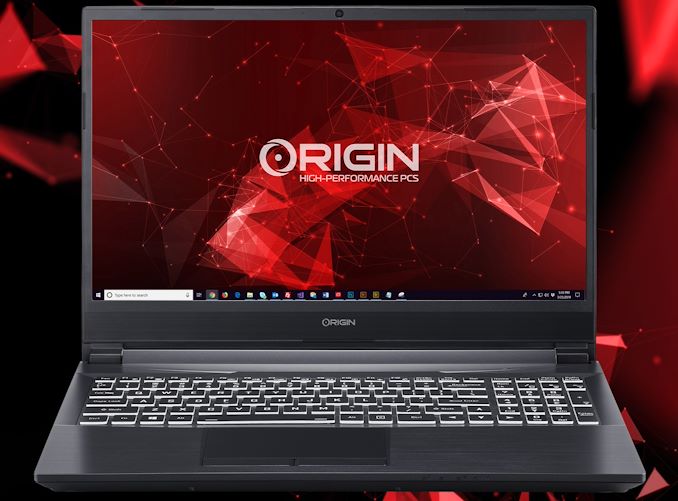
Overall, Origin is offering a fairly comprehensive set of customizations on its official product page. Along with the memory options mentioned earlier, the laptop offers support for up to two M.2 SSDs, and a single HDD bay which can accommodate SATA based drives, resulting in a plethora of storage options. In a maximum configuration, the EON15-X AMD supports up to 2 TB NVMe Gen4 drives, M.2 SATA based 2 TB drives, and up to 4 TB of SATA SSDs which can be configured within the customizer.
On the connectivity front, the Origin PC EON15-X AMD has plenty to shout about with two USB 3.1 G2 Type-A ports, one USB 2.0 port, and a USB 3.2 G2 Type-C port with DisplayPort 1.4 alt mode functionality. Supporting up to three external screens, including the Type-C DisplayPort 1.4 output, and included Mini DisplayPort 1.4 output, with a single HDMI TM video output also present. Gamers looking for RGB are in luck with a full-size customizable keyboard with integrated RGB LEDs and a touchpad which includes an embedded fingerprint reader for extra security.Origin PC EON15-X AMD Specifications CPU AMD Ryzen 5 3600 6-Core, 3.6 GHz Base, 4.2 GHz Boost
AMD Ryzen 7 3700X 8-Core, 3.6 GHz Base, 4.4 GHz Boost
AMD Ryzen 9 3900 12-Core, 3.8 GHz Base, 4.6 GHz BoostGPU NVIDIA GeForce RTX 2060 6 GB Max-P
NVIDIA GeForce RTX 2070 8 GB Max-QDisplay 15.6" IPS FHD 1080p 144 Hz Memory Origin Approved DDR4-2400
8 GB (2 x 4 GB)
16 GB (2 x 8 GB)
16 GB (4 x 4 GB)
32 GB (4 x 8 GB)
32 GB (2 x 16 GB)
64 GB (4 x 16 GB)
G.Skill Ripjaws DDR4-2400
16 GB (2 x 8 GB)
Kingston HyperX Impact DDR4-2400
16 GB (2 x 8 GB)
32 GB (2 x 16 GB)
64 GB (4 x 16 GB)
Kingston HyperX Impact DDR4-2666
16 GB (2 x 8 GB)
32 GB (2 x 16 GB)
64 GB (4 x 16 GB)Storage NVMe Up To 2 TB
M.2 SATA Up To 2 TB
SATA SSD Up To 4 TBNetworking Intel AX200 Wi-Fi 6 + BT 5.0 Ports 1 x USB 3.2 G2 Type-C (DisplayPort 1.4)
2 x USB 3.1 G2 Type-A
1 x USB 2.0 Type-A
1 x 3.5 mm Phono/Mic
1 x 3.5 mm Mic
1 x HDMI TM Output
1 x Mini DisplayPort 1.4 Output
1 x RJ-45Battery> 62 Wh Li-ion Dimensions (WxDxH) 14.2 x 10.1 x 1.2 inches Weight 5.9 lbs Price (USD) Starts at $1624
Users with deep pockets can also add a bit of flair to their system, as Origin PC offers painting and customization options for the EON15-X AMD. Its HD UV printing service starts at $149, with a metallic finish starting at $175. Origin PC even offer a custom hydro dipping option which begins at $199.
The Origin PC EON15-X AMD is currently available from the Origin PC website with prices starting at $1624 for the base model, with the price when fully customized can easily surpass $3400.
Related Reading- NVIDIA's 2020 Laptop Refresh: Launches GeForce RTX 2080 Super, 2070 Super, & GTX 1650 Ti
- Intel Details 10th Gen Comet Lake-H for 45 Notebooks: Up to 5.3 GHz*
- NVIDIA Details Dynamic Boost Tech & Advanced Optimus (G-Sync & Optimus At Last
- MSI Launches New 10th Gen Core Laptops With NVIDIA RTX Super And Mini LED
More...
-
04-07-20, 03:04 PM #10494
Anandtech: CEVA Announces SensPro - New High Performance Sensor Hub IP
As devices become ever more interconnected and increase their capabilities to sense the world through different kind of sensors, there’s an ever more increasing stream of data that is being created. Naturally, not all of that data is useful, with the vast majority of it being thrown away. To differentiate between useful data and less useful noise, there’s an increasing need for processing power on the part of the brains of newer generation devices.
In the past generally we’d have more simplistic sensors such as microphones or accelerometers being the main data sources, and that’s where we usually know the term of “sensor hub” from – when mobile devices first trying to optimise the handling of smartphone sensors. First these were discrete chips, but later on they have been integrated into SoCs.
As data complexity rises, and as new and more complex sensors types appear, CEVA sees to address the need for higher performance sensor hubs. Today’s announcement is about the new SensPro IP family from CEVA, offering a new IP architecture that leverages the company’s existing IP expertise, combining various processing capabilities and flexibility into one single self-contained product offering.
SensPro is a ground-up design that focuses on maximising power efficiency, combining processing designs that were found in CEVA’s NeuPro designs in terms of ML capabilities, the XM6 image processing prowess, as well as the company’s in-house BX2 scalar DSP microarchitecture which serves as the control unit for the whole new IP.
The idea to combine these elements of what are usually different individual IPs into a single processing block is said to be a first in the industry – hence their calling It the first ever “High performance sensor hub DSP”. The goals here are extremely high in terms of the flexibility of the design and what kind of use-cases it’s meant to be deployed in. Usually we think as smartphone being the first such use-case, but it’s actually more in other areas where a device wouldn’t have as high processing capabilities where we’d see the SensPro have a larger impact in. Quoted are use-cases of robotics, automotive, AR/VR headsets, voice assistants, smart home devices and more importantly new industrial applications where we’re seeing a larger shift to more integrated and smarter automation in areas such as production lines.
Combining scalar and vector processing into one IP, with the ability to also process floating-point operations is quite unique – well you’d think a CPU could do that as well, but here CEVA’s advantages lie in their ability to do all of this extremely efficiently in a low-power design.
From a performance standpoint, the new SensPro is a major architectural upgrade over what was previously offered by familiar IP such as the XM6. CEVA here quoted figures such as 400 GFLOPs of power on a 1.6GHz design target in terms of FP performance, achieved through either 64 32-bit FP MAC operations or 128 16-bit ops. FP capability is said to be important for higher precision arithmetic use-cases where higher dynamic range is required, Radar being one data type that is being brought up in this context.
There’s also the fixed-point vector processing pipelines whose configuration contains up to 1024 8x8 MACs, allowing for up to 3 TOPs 8x8 inferencing. CEVA actually also has an execution mode for binary neural networks and promises here up to 20TOPs inferencing throughput, which is a wild number, but we have to remember that this only to applies to specific models that are able to work with only 2-bits of data.
The IP’s data bandwidth capabilities are actually quite massive, employing a super-wide 2048-bit load unit alongside a 1024-bit store unit, which corresponds to 400GB/s of data ingestion and 200GB/s of output. It sounds like a lot, but we have to remember that the IP would be handling immense data streams coming from a myriad of different sensors.
From a high-level perspective, what’s important to note in the block diagram is the configuration flexibility that the IP offers. Generally, amongst the processing units, the scalar processors as well as one vector processing unit are the minimum configuration of the design. Within a vector unit though things can quite a bit more complicated:
A SensPro VCU consists of different execution units handling either fixed point MACs, floating point MACs, or other specifically dedicated special function units for their specific instructions.
The configurability for customers is even more fine-grained than just choosing the amount and type of units that’s integrated into the IP, in the floating point units for example CEVA also gives one the choice between different throughput designs, with a choice of doubling the single-precision throughput to the optional possibility of doubling throughput again for FP16 operations.
CEVA’s initial IP configurations consists of 3 designs – the SP250, SP500F and SP1000, with each incremental step corresponding to the 8-bit MAC configuration.
- SP250 – single vector unit with 256 8x8 MACs targeting imaging, vision, and sound centric applications
- SP500F – single vector unit with 512 8x8 MACs and 64 single precision floating point MACs targeting SLAM centric applications
- SP1000 – dual vector units with 1024 8x8 MACs and binary networks support targeting AI centric applications
The SP500F is the only starting design that implements the floating-point execution units and is more targeted towards vision and SLAM use-cases with radar or LIDAR. For consumer electronics we’ll most likely see the SP250 being used in devices such as smartphones, IP cameras and other similar products.
Ran Snir, Vice President of Research and Development at CEVA, commented:The IP is targeted for general licensing in Q3 2020 – meaning it’ll be a few years before we see any kind of silicon design-ins and even products with the new IP.
“With the growth in the number and variety of sensors in modern systems, and their substantially different computation needs, we set out to design a new architecture from the ground up to address this challenge. We constructed SensPro as a highly configurable, holistic architecture that could handle these intensive workloads using a combination of scalar, vector processing and AI acceleration, while utilizing the latest micro-architecture design techniques of deep pipelining, parallelism, and multi-tasking. The result is the most powerful DSP architecture ever conceived for sensor hubs and we’re truly excited to work with our customers and partners to bring contextually-aware products to market based on it.”
More...
-
04-07-20, 05:59 PM #10495
Anandtech: ASUS Updates Chromebook Flip Series With Intel 10th Gen Comet Lake
With the vast majority of vendors updating its notebook portfolios with Intel 10th generation processors, ASUS has added a new model its Chromebook lineup, the Chromebook Flip C436. Two new models are available with Intel's new Comet Lake CPUs, one equipped with a dual-core Intel i3-10110U, while the other variation comes with a quad-core Intel i5-10210U.
Adding to its 'premium' range of Chromebooks, which has models starting from entry-level Intel Celeron variants, the new ASUS Chromebook Flip C436 has a 2-in-1 convertible design. It features a compact 14-inch 1080p touchscreen with its 4-sided NanoEdge display technology. The screen itself has a 360° hinge which allows it to be used in multiple configurations including tablet mode, and as a stand. It's constructed from magnesium alloy and is available in two colors, transparent silver and aerogel white.
Looking at the technical specifications, there are two current variations available for purchase from the ASUS Store. The cheaper model comes with an Intel i3-10110U, a PCIe 3.0 x2 128 GB NVMe M.2 SSD, 8 GB of DDR3L memory, and a Wi-Fi 6 wireless interface with BT 5.0 support. The more expensive version of the C436 has an Intel Core i5-10210U quad-core processor, a 512 GB PCIe 3.0 x2 NVMe M.2 SSD, 16 GB of DDR3L memory, and the same Wi-Fi 6 adaptor with BT 5.0 connectivity.
Both models include two USB 3.1 G1 Type-C ports, which both support display and power delivery. Along the top bezel is an HD webcam, with an illuminated chiclet keyboard, and a fingerprint sensor integrated into the power button. For sound, the ASUS Chromebook Flip C436 is using a pair of Harman Kardon stereo speakers, with a 3.5 mm Headphone-out and audio-in combo jack for users looking to use headphones or headsets.

The ASUS Chromebook Flip C436 conforms to Intel's Project Athena certification with a reported battery life of up to 12 hours. The battery spec stands at 42 WHrs due to its 3S1P 3-cell Li-ion battery. It also weighs just 2.6 lbs and sits as its premium Chromebook model, succeeding the C434 we reported on last year.
It's one of the most extravagant 2-in-1 Chromebooks on the market at present, with prices starting at $800 for the i3 model, with the i5 model costing $1000. Both are currently available to buy from the ASUS store.
Related Reading- Origin PC Announces EON15-X AMD Gaming Laptop: Putting AMD's Ryzen 9 3900 In a Laptop
- Razer Refreshes Blade 15 Series With Intel 10th Gen Comet Lake
- MSI Launches New 10th Gen Core Laptops With NVIDIA RTX Super And Mini LED
- Intel Details 10th Gen Comet Lake-H for 45 W Notebooks: Up to 5.3 GHz*
More...
-
04-07-20, 05:59 PM #10496
Anandtech: SteelSeries Acquires A-Volute, Company Behind Nahimic Audio Software
Danish peripherals and gaming headset manufacturer SteelSeries has announced its acquisition of A-Volute, the independent developer of the Nahimic audio software. The Danish manufacturer is looking to take full advantage of A-Volutes' experience to bolster its audio range, with its Arctis series already established in the gaming headset market.
SteelSeries is no stranger to the peripherals market, with experience spanning over the best part of two decades. The company has seen successful product launches, and its popular products including its World of Warcraft branded gaming mice. So in a bid to boost its audio range which is spearheaded by its premium Arctics range, it has acquired A-Volute.
A-Volutes' portfolio is impressive and its software is used by many system integrators, including Dell, GIGABYTE, and MSI. For those unfamiliar with it, the Nahimic audio software allows users to setup various audio enhancements/adjustments via with a control panel application. Among other things, the Nahimic software can provide virtual surround sound mixing, as well as audio equalization settings including bass, treble, and voice when used with a microphone. It remains to be seen how SteelSeries is looking to implement Nahimic into its gaming products, but its Arctis Pro comes with a GameDAC which could shed some light on possible use case scenarios.
Current SteelSeries CEO Ehtisham Rabbani said this about its purchase of A-Volute:
"With our award-winning innovations that have redefined the gaming audio experience, and our best-in-class SteelSeries Engine software, bringing A-Volute into the SteelSeries family seemed like a natural fit and we are extremely excited about partnering with Tuyen and his team,” said Ehtisham Rabbani, CEO of SteelSeries. “With their excellence in audio software, they’ll help us improve gamers’ audio experiences even further".No details regarding the financials of the transaction have been revealed, but SteelSeries says the deal will close later on this spring.
Related Reading- SteelSeries Launches Low-Cost Gaming Peripherals With The Rival 3 Gaming Mouse, Apex 3, and Apex 5 Gaming Keyboards
- MSI Shows Off New White Creator Peripherals Range
- SteelSeries Updates The Arctis Headphone Lineup And Offers Standalone GameDAC
- CES 2020: EVGA Showcases New Nu Audio Pro Card
More...
-
04-08-20, 11:09 AM #10497
Anandtech: SK Hynix Sampling New PCIe 4.0 96L SSDs, 128L 4D NAND Enterprise SSDs
SK Hynix today announced that they’ve begun sampling new generation enterprise EDSFF E1.L SSDs based on their 128-layer “4D NAND” flash modules, in the form of the new PE8111, as well as for the first time introducing PCIe 4.0 connectivity in its new 96-layer U.2/U.3 form-factor PE8010 and PE8030 enterprise SSDs.
We had expected the new PE8111 eSSD for some time know as we reported about SK Hynix’s plans to introduce such a product last November. The biggest change here is the company’s use of new 128-layer 3D NAND modules that the company dubs as “4D-NAND” because of a new denser cell structure design and higher per-die I/O speeds.
The PE8111 still retains as PCIe 3.0 interface and its corresponding performance characteristics plateau at 3400MB/s sequential reads and 3000MB/s sequential writes – whilst supporting random reads and writes up to respectively 700K and 100K IOPs. Because it’s a long-factor EDSFF E1.L form-factor, storage capacity for the unit falls in at 16TB, and SK Hynix is reporting that they’re working on a 32TB solution in the future.
The new PE8010 and PE8030 come in an U.2/U.3 form-factor and are the company’s first SSDs support PCIe 4.0. The SSDs here still rely on 96-layer NAND modules from the company – but are using an in-house controller chip. Bandwidth here is naturally higher, reaching up to 6500MB/s reads and 3700MB/s write sequentially, with random IOPs falling in at respectively 1100K for reads and 320K for writes.
Power consumption for the new U.2/U.3 drives is actually extremely competitive given their jump to PCIe 4.0 – rising only up to 17W as opposed to their previous generation PCIe 3.0 products which fell in at 14W. This is likely to be attributed to the new generation custom controller, which might be more optimised for low-power compared some or the early third-party 4.0 controllers out there.
The PE8010 and PE8030 are sampling right now with customers – with the PE8111 planned to be sampled in the second half of the year.
Related Reading:- Enterprise NVMe Round-Up 2: SK Hynix, Samsung, DapuStor and DERA
- SK Hynix to Cut CapEx, Accelerate Transitions, 1z nm DRAM & 128L 4D NAND in 2020
- SK Hynix Sampling 128-layer 3D NAND SSDs
- SK Hynix NAND Update: 3D NAND Output Cut, Slowdown Capacity Expansions
- SK Hynix Starts Production of 128-Layer 4D NAND, 176-Layer Being Developed
More...
-
04-08-20, 11:09 AM #10498
Anandtech: Mobile Benchmark Cheating: When a SoC Vendor Provides It As A Service
Mobile benchmark cheating has a long story that goes far back for the industry (well – at least in smartphone industry years), and has also been a controversial coverage topic at AnandTech for several years now. I remember back in 2013 where I had tipped off Brian and Anand about some of the shenanigans Samsung was doing on the GPU of Exynos chipsets on the Galaxy S4, only for the thing to blow up into a wider analysis of the practice amongst many of the mobile vendors back then – with all of them being found guilty.
In recent years however we saw a big resurgence of such methods, particularly from Chinese vendors. The one big difference here however is that there’s always been somewhat of a firewall in our coverage between what a device vendor did, and what chip vendors enabled them to do, and that’s where we come to MediaTek’s behavior over the last few years. In most past cases we always blamed the device vendors for cheating as it had been their mechanisms and initiative – we hadn’t had evidence of enablement by chipset vendors, at least until now.
More...
-
04-09-20, 09:41 AM #10499
Anandtech: AMD’s Mobile Revival: Redefining the Notebook Business with the Ryzen 9 49
At every turn in the story of AMD’s notebook portfolio, we’ve been there to document the highs and lows. Five years ago, AMD was definitely suffering from a combination of a poor platform, and poor notebook designs tailored for the budget end of the market. Last year, AMD scored a design win in the Microsoft Surface, and now 2020 is set to be another significant step back into this market, with the new Ryzen Mobile 4000 series. Touting over 100+ design wins this year for the new 7nm processor line, we have the first of the halo products in for review: the ASUS Zephyrus G14, with an 8-core Ryzen 9 4900HS under the hood. We’re comparing it to an equivalent Razer Blade 15-inch, and it is very clear that AMD can take the lead in a lot of tests, and be very competitive in others.
More...
-
04-09-20, 09:41 AM #10500
Anandtech: Samsung Announces Galaxy A51 5G & A71 5G Mid-Range Smartphones
Yesterday Samsung announced the company’s new Galaxy A51 5G and A71 5G phones – for the first time adding 5G capabilities to the company’s arguably most popular and successful phone line-up.
While there’s a lot of talk about the prestige high-end Galaxy S series from Samsung – the majority of phones the company actually sells lies in their more affordable mid-range line-up. Particularly in the last few years, the A-series devices have seen a large amount of success and being Samsung’s top selling phones. The new A51 and A71 iterate on last year’s models – updating a lot of the aspects of the phones hopefully without breaking the bank in terms of cost. Today's A51 5G and A71 5G phones augment the previously announced A51 and A71's with 5G connectivity.
While we don’t have outright confirmation from Samsung, the phones are seemingly powered by the new premium Exynos 980 SoC from Samsung SLSI – it’s the only chip that fits Samsung’s higher-level specifications of the new phone’s SoCs. The chipset was released last September and seemed extremely competitive in its positioning, brandishing all the capabilities of similar chips in its range, including the newest Cortex-A77 CPU cores.Samsung Galaxy A51 & A71 Series Galaxy A51 5G Galaxy A71 5G SoC Exynos 980
2x Cortex-A77 @ 2.2GHz
6x Cortex-A55 @ 1.8GHz
Mali-G76MP5Display 6.5-inch 6.7-inch SAMOLED
FHD+ 2400 x 1080 (20:9)Dimensions 158.9 x 73.6 x 8.7 mm
187 grams162.5 x 75.5 x 8.1 mm
185 gramsRAM 6/8GB NAND
Storage128 GB
+ mSDBattery 4500mAh (17.32Wh) typ.
4370mAh (16.82Wh) rated15W
Fast Charging25W
Fast ChargingFront Camera 32MP
f/2.2Primary Rear Camera 48MP
f/2.064MP
f/1.8Secondary
Rear Camera12MP Ultra-Wide-Angle
f/2.2Tertiary
Rear Camera5MP Depth Camera
f/2.4Extra
Camera5MP Macro Shot
f/2.44G / 5G
ModemExynos 5G - (Integrated)
(LTE Category 16/18)
DL = 1000 Mbps
5x20MHz CA, 256-QAM
UL = 200 Mbps
2x20MHz CA, 256-QAM
(5G NR Sub-6)
DL = 2550 Mbps
UL = 1280 MbpsSIM Size NanoSIM + eSIM Wireless 802.11a/b/g/n/ac
BT 5.0 LE, NFC, GPS/Glonass/Galileo/BDSConnectivity USB Type-C Special Features On-screen fingerprint sensor Launch OS Android 10 with Samsung OneUI 2.0
(Unconfirmed yet)Launch Prices n/a n/a
The key aspect of the phones is that they are 5G capable. Samsung here integrates the modem onto the chip, capable of support sub-6GHz networks (mmWave capability is missing – both due to technical lack of ability and the associated higher costs).
Usually Samsung posts an either/or in the specifications of the SoC of a new device when it differs between regions. Here the specifications are referring to a single chip – it’s going to be interesting to see if this also means that Samsung is going forward with the Exynos chip in the USA – typically a market where the company always preferred to use Qualcomm chips.
The phones come in 6 or 8GB of RAM although Samsung doesn’t specify how this will be chosen as they only list 128GB storage as the only configurable option in that regard. MicroSD card slot is naturally still available for more storage.
On the front, both the A51 and A71 come with 2400 x 1080 FHD+ AMOLED displays- only differing in their diagonal size at 6.5” and 6.7”.
These are actually still quite big phones at 73.6 and 75.5mm widths, both wider than a Galaxy S20+, with the A71 almost matching an S20 Ultra in width. Oddly enough, the smaller A51 is advertised as being the heavier of the two new phones at 187g vs 185g.
Both come with a centre hole-punch camera setup, featuring a 32MP sensor and f/2.2 aperture lens. Samsung’s press renders also show the camera cut-out on the higher-end A71 5G is actually larger than on the small model – also a bit odd.
On the rear camera side, the smaller A51 comes with a 48MP sensor at f/2.0, whilst the A71 has a 64MP f/1.8 main camera unit. Both phones share the specifications on the remaining 3 modules: A 12MP f/2.2 Ultra-Wide-Camera, a 5MP f/2.4 depth camera, and a 5MP f/2.4 macro shot camera.
The rear glass design is glass, but with a more shimmering design effect that’s visually distinct and divided into two halves on the phone.
Samsung hasn’t yet announced official pricing for the new 5G variants of the phones (The A51 and A71 were around 300 $/€ to 400 $/€), but says availability will start throughout the month of April depending on region, subject to 5G availability.
Related Reading:- The Samsung Galaxy S20+, S20 Ultra Exynos & Snapdragon Review: Megalomania Devices
- Samsung Unveils Galaxy A51 & Galaxy A71 Mid-Range Smartphones: 6.5/6.7-Inches With 4-Module Cameras
- Samsung Announces Exynos 980 - Mid-Range With Integrated 5G Modem
More...
Thread Information
Users Browsing this Thread
There are currently 56 users browsing this thread. (0 members and 56 guests)




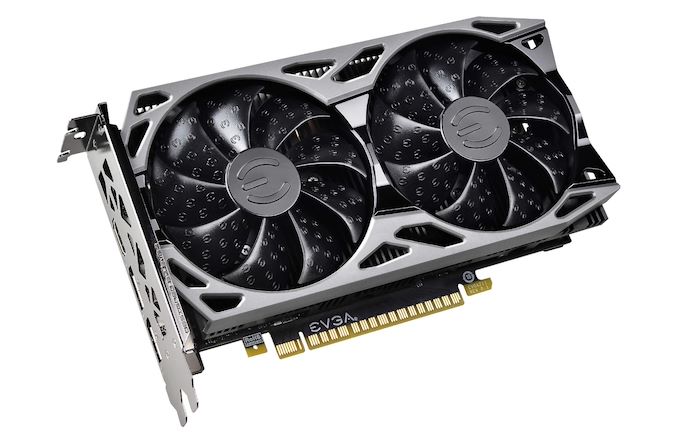
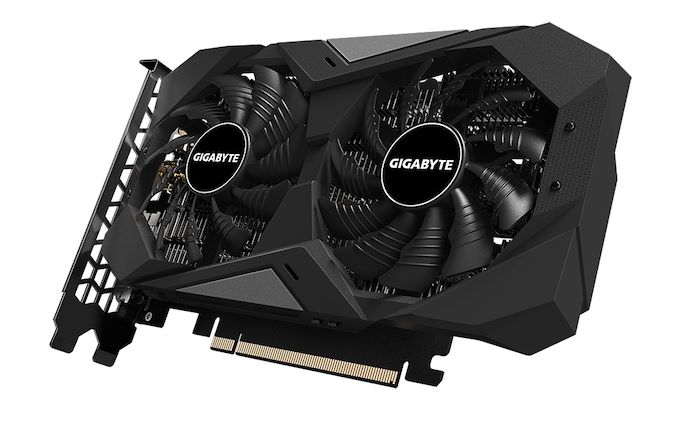

 Quote
Quote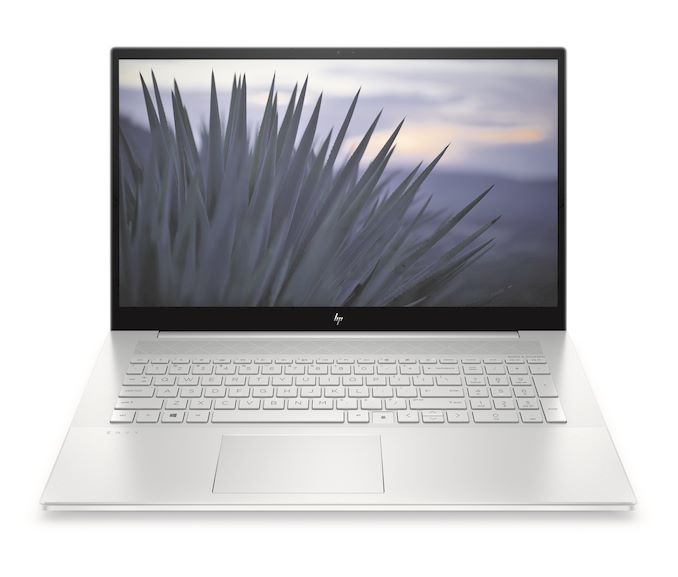

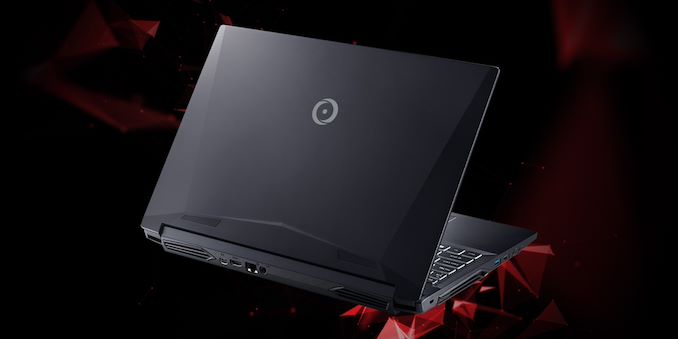

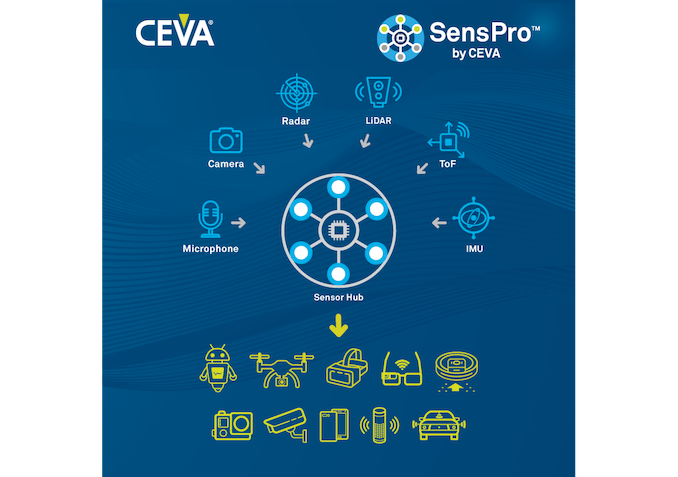

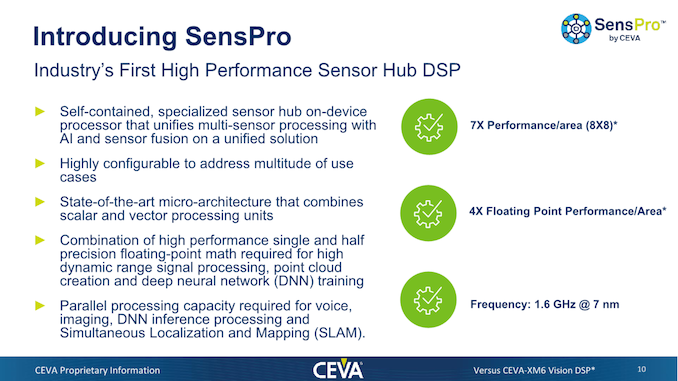
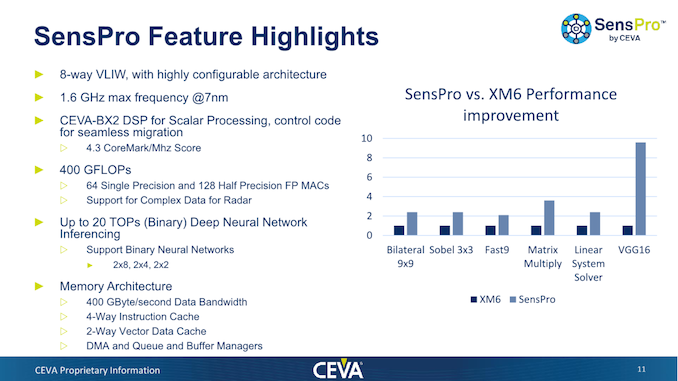

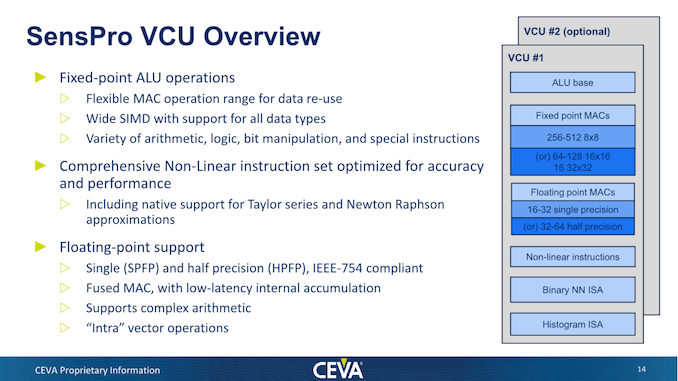
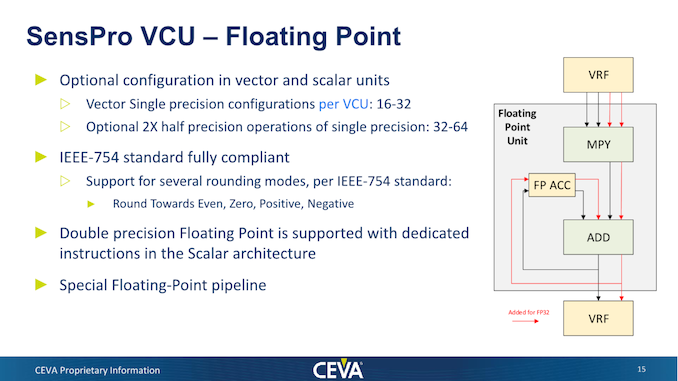

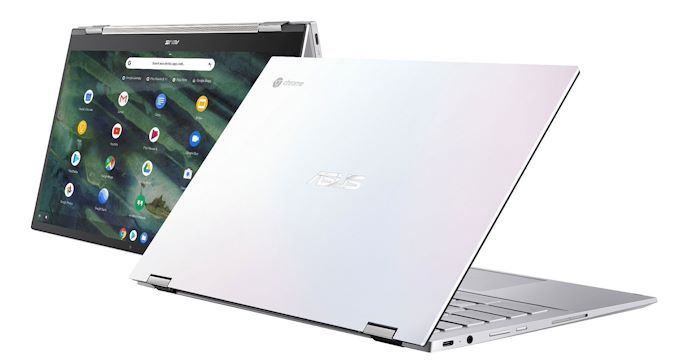


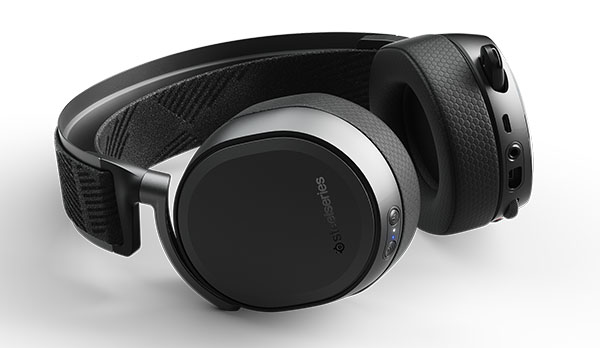






















Bookmarks